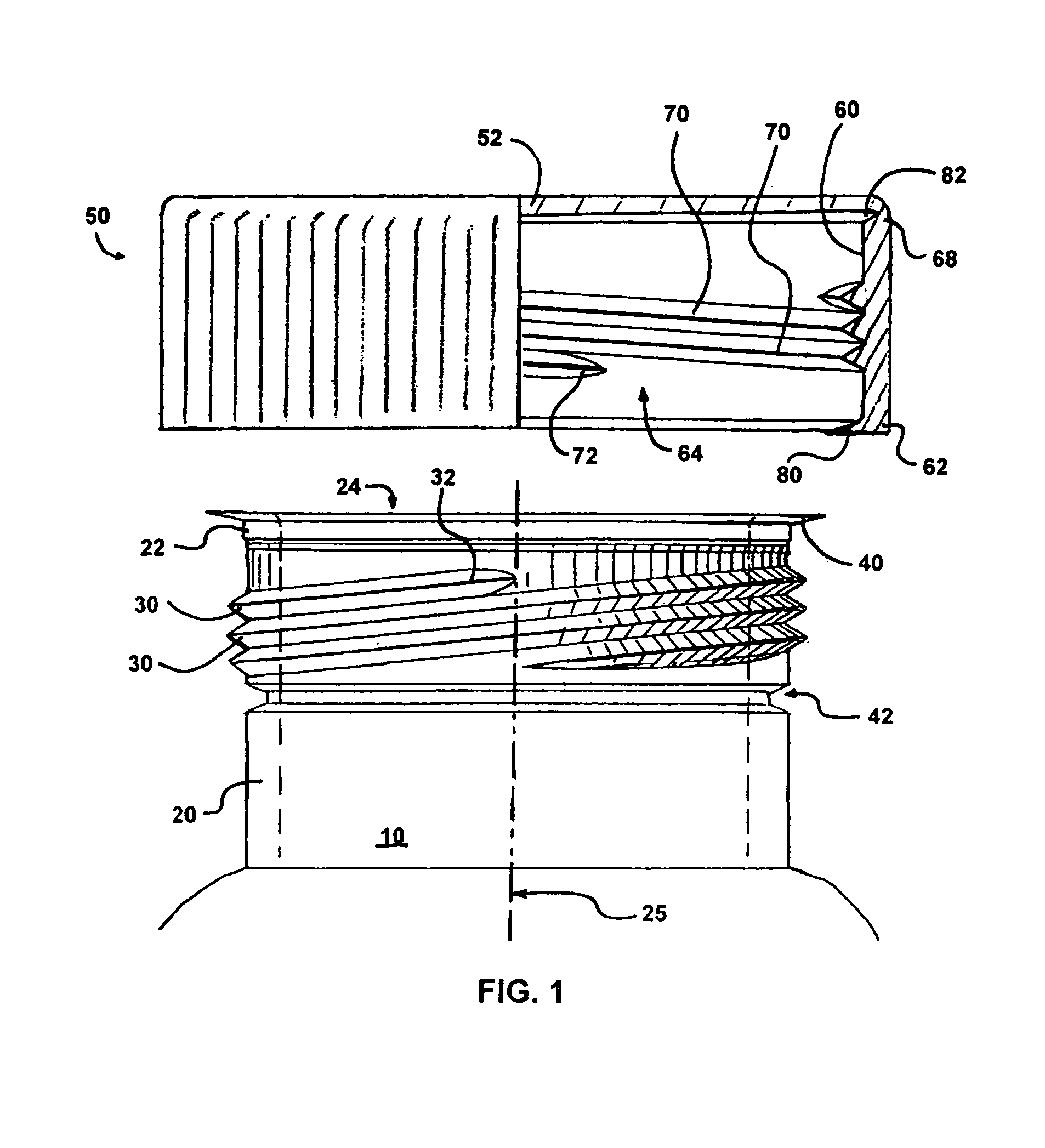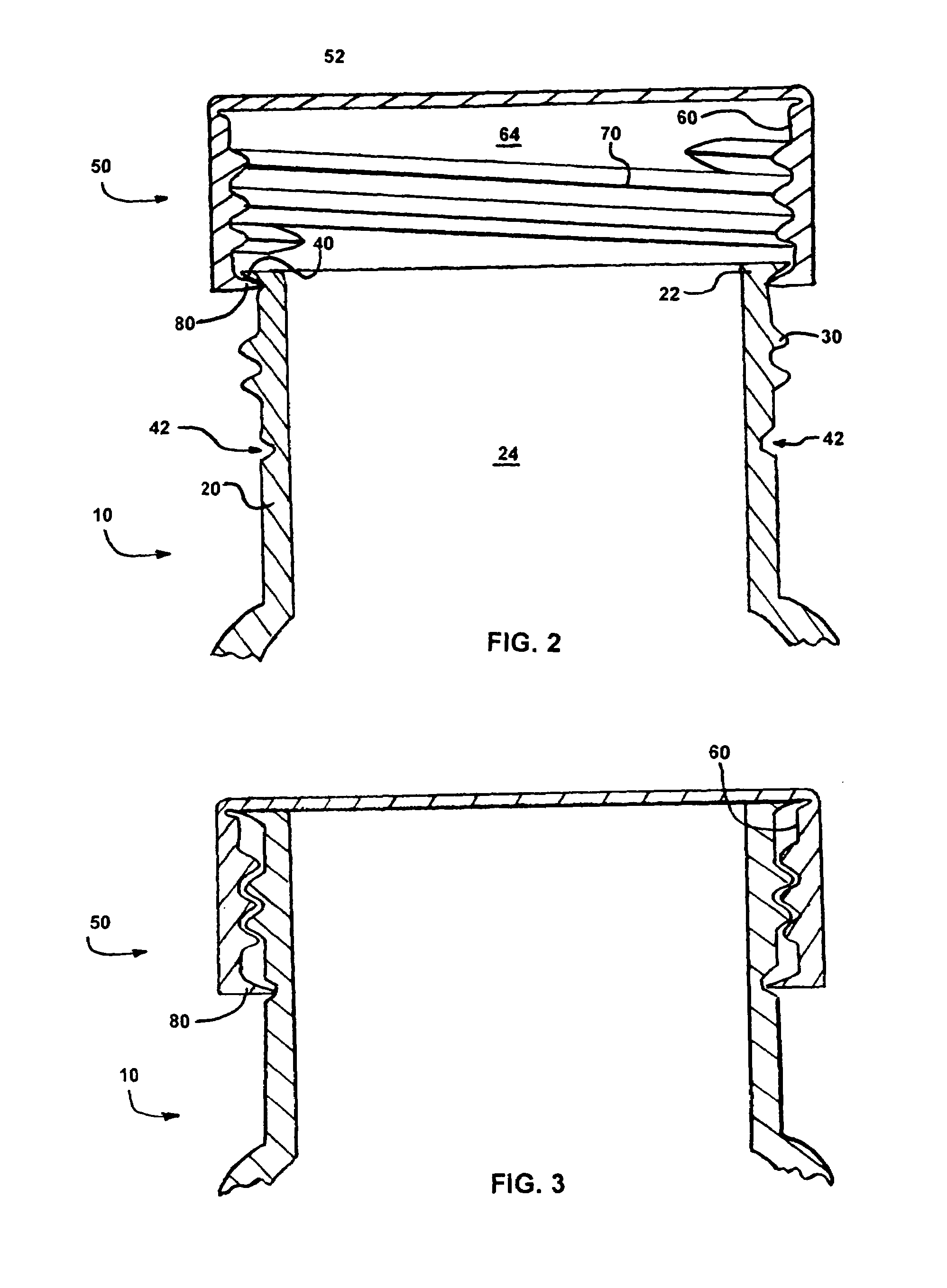Method of connecting a top to a container
a technology of connecting a top and a container, applied in the direction of caps, rotating screw stopper insertion, application, etc., can solve the problems of slipping one or the other component out of a person's hands, becoming soiled or even broken, and not being used for a long time. , to achieve the effect of not being easily and inadvertently separated
- Summary
- Abstract
- Description
- Claims
- Application Information
AI Technical Summary
Benefits of technology
Problems solved by technology
Method used
Image
Examples
Embodiment Construction
)
[0018]The detailed description set forth below in connection with the appended drawings is intended as a description of presently preferred embodiments of the invention and is not intended to represent the only forms in which the present invention may be constructed and / or utilized. The description sets forth the functions and the sequence of steps for constructing and operating the invention in connection with the illustrated embodiments. However, it is to be understood that the same or equivalent functions and methods may be accomplished by different embodiments that are also intended to be encompassed within the spirit and scope of the invention.
[0019]FIGS. 1 through 3 illustrate one embodiment of the present invention, in which there is a container 10 comprising at one end a generally annular sidewall 20 having a distal end 22 that defines an opening 24 having centerline 25. The container 10 further comprises screw-type threads 30 formed near the distal end 22 and one or more r...
PUM
 Login to View More
Login to View More Abstract
Description
Claims
Application Information
 Login to View More
Login to View More - R&D
- Intellectual Property
- Life Sciences
- Materials
- Tech Scout
- Unparalleled Data Quality
- Higher Quality Content
- 60% Fewer Hallucinations
Browse by: Latest US Patents, China's latest patents, Technical Efficacy Thesaurus, Application Domain, Technology Topic, Popular Technical Reports.
© 2025 PatSnap. All rights reserved.Legal|Privacy policy|Modern Slavery Act Transparency Statement|Sitemap|About US| Contact US: help@patsnap.com



